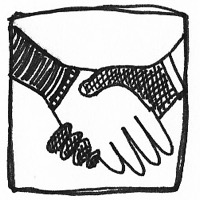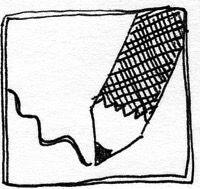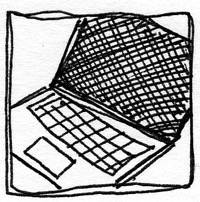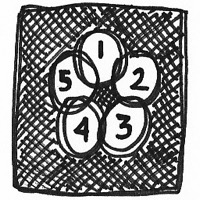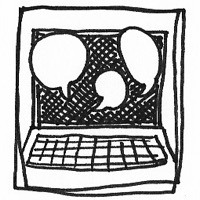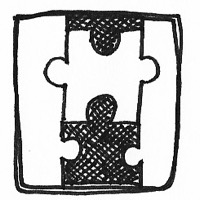Written reflections accompanied the videos shared in the previous Synthesis Through Memory in the Discussion Board section. These textual reflections were reposted at the conclusion of the term in the students' online portfolios, wherein students attempted to think broadly about their metacognitive experiences and connect these to the idea of preparing them for the 21st century workplace, a space that—we argue—is necessarily a networked space, defined by digital communities that are social and professional. Linked (again) here is our complete portfolio prompt; below is an excerpt of language from the prompt:
we also want you to include on your Site's home page the one- to two-minute video you did for the discussion board (week 15) on the canon of Memory. Embed this brief video on your home page, and below that, write a brief paragraph in which you talk about how the video encapsulates your learning and experience in the course and is the representative piece for the multimodal portfolio in itself. Also, in this paragraph on your home page, please offer your impressions of how your classmates handled this prompt (this will require you to revisit the discussion board for week 15 and see what your peers created). What kinds of insights did your peers come up with? Taken together, what did your peers' comments and your own consideration of the canon of Memory teach you about multimodality as a way of creating meaning and community in the 21st century workplace?
It should be clear that our language in this portfolio prompt engages critical concerns about the value and intention of reflection, tying this aspect of many college writing curricula specifically to an application in online technical writing courses (our eTC) that use a multimodal pedagogy. The prompt relies on the instrumentality of the canon of Memory to tie together the skills learned via practice with the other canons, in the assignments collected in the Portfolio itself.
Included below are excerpts from some students' responses to the Portfolio prompt. Yes, the students employ the "buzzwords" Memory and multimodality, but note how these example student syntheses also assemble these terms with other concepts that form the core structure of our technical writing curricular mission, such as "reflecting," "classmates" (indicating awareness of community), "technology," and "audience."
Students' reflections included these insights:
Student 1:
Memory has allowed for me to retain the feedback I receive and further improve my writing and projects. Memory involves reflecting and improving. A majority of my classmates believed that memory was primarily done through our memory reflections and "using our knowledge we have gained to make our next project better." [Quoting other students]Student 2:
[This video] also addresses, by way of its creation, my use and understanding of multimodality. I think my classmates have a more structured view of memory and multimodality than I do. With technology moving as fast as it is, I see a future where all documents will be multimodal, if for no other reason than it will have to capture the audiences' attention like never before.Student 3:
My favorite wording I heard for the definition of this outcome is using the knowledge that you have gained and applying it to something new [referring directly to another student's work]. What I have taken away from this class is that the more that I create projects, the faster I will be able to create them, and the quality of the projects will continue to increase.Student 4:
It seemed unanimous that the fundamental purpose, of memory, is to recall knowledge that can help solve a new or pertinent problem.
These are remarks from four of our students and certainly cannot be taken to be indicative of the style and perceptiveness of all of our students' engagements, but what these do indicate, in the context of our pilot, is that it is possible for students to engage with complex considerations of memory and metacognition simultaneously with considerations of composing in multiple modes. In addition, as several of them mentioned their classmates' responses, we feel heartened that the curriculum, specifically the reflection prompts as indicated above, encourage community and social presence in the classroom. Students also appeared to understand the reason for our demand that they compose in multiple modes: to be prepared for future 21st-century scenarios that require that community members in industry and social contexts possess such skills. We believe these end-of-course reflections indicate students' understanding of our goals for their learning relative to multimodality, Memory, and metacognition.
A few "deep dives" into two students' portfolios—where students set their overall learning into conversation with the required major writing assignment and reflective content in the course—reveals the promise of the students' connections and overall learning we have discussed in this webtext. The video below (a transcript for which available here) offers an exploration of two students' portfolios and the final in situ setting of their Memory, and other, reflections.
The extensive "knitting together" approach conveyed in the above video suggests why we were buoyed by the perceptiveness of some students' remarks, video content, and static-text composing at the course's end. As the textual and video reflections we've included indicate, some students clearly exhibited improved knowledge of the interconnectedness between Memory, community, reflection, metacognition, and multimodality.
